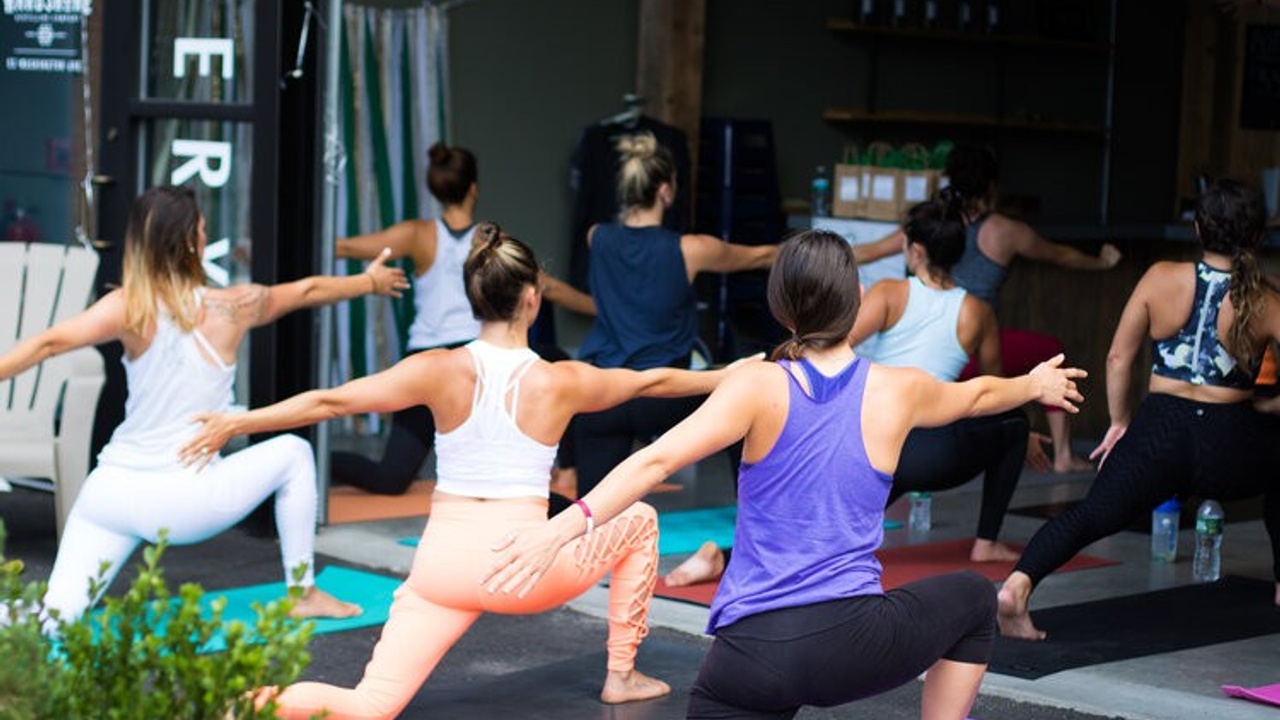Ask Us: "Help! I queef during yoga!"

Yes... You read the title right. I do my best to talk about things that women don't like to talk about... But things that NEED to be talked about! From sweat and odor “down under,” to incontinence, to painful sex, I TALK ABOUT IT.
It's what I do... It's who I am... It's my passion!
And today we're talking about queefs (vaginal farts).
Do you know what a queef is? A queef is a "vart," or a vaginal fart. It’s when air gets trapped in the vagina, and then comes out, often accompanied by noise or a strange bubble-like sensation.
If you're a woman, you've probably experienced a queef or two. They're very normal! You're not "weird." Most often, queefs happen during sex. However, queefs occur during yoga and other movement-based practices as well.

While queefs are nothing to worry about, it can be distressing if they repeatedly happen and become a part of your daily life.
Recently, I received the following question:
I’ve been doing your videos and find them really helpful! I have also been doing yoga but I'm embarrassed about going back to yoga class as I find that in certain poses, air passes through my vagina and as I come out of the pose the air comes out with a farting sound. Thankfully this has only happened at home and not in class! Will this go away with continued strengthening of my pelvic floor muscles? This isn't a question I would feel comfortable asking most people but I do with you!
Here is my response:
I'm so happy you asked me about this! This is a very common question and something MANY of us have experienced... You are not alone.
A "queef" or vaginal "fart" seems to be most common among women who are recently postpartum and/or who have a weak pelvic floor that has lost some of the natural reflexive ability to gently contract and relax at the right times when transitioning between movements. This weakness can occur when the pelvic floor muscles are too tight, or too lax.
With a queef, air enters the vaginal canal and then gets pushed out when the pressure changes (which happens naturally when you change positions). Certain movements — for example, inversions such as downward dog, or 3-legged dog where one leg lifts up — create a vacuum of air inside the vagina. What comes in must eventually go out... And when the air comes out, it makes a sound.

How to prevent queefing:
-
Do a gentle kegel and engage your low abs when you're preparing to change yoga positions. I call this “zipping up” your core. Learn more about zipping up in my program, Lift! To help you “zip” — think of very gently engaging the pelvic floor muscles (the muscles that surround the anus and the vagina), **without** squeezing your butt muscles. “Zipping up” gets the entire core team working together, and helps stabilize your center. It also helps keep your pelvic organs in place as you’re moving, which will minimize the vacuum effect.
-
Hold the “zipped up” core and EXHALE as you move into the new posture.
-
Once you're in the new yoga pose, slowly release the contraction and settle into the posture.
This is much like when you need to "hold in" a fart... When you're in a crowded room and you really CAN'T let loose. What do you do? You engage your pelvic floor muscles and the sphincter muscles around your anus to hold the fart in, and when you're in an appropriate place you can slowly (and quietly) release.
Note: if you're in an inverted posture like shoulderstand (in which your pelvic organs move toward your head and create a super-strong vacuum to hold in the air), keep your legs together. This will prevent more air from entering the vaginal canal (which can happen if you spread your legs apart).
Sometimes — no matter what you do — a queef is going to happen. It simply needs to be handled with grace and a smile. Honestly, your yoga-mates probably won't even hear it! The sensation is usually stronger than the sound. Since you — the person who queefed — can FEEL the sensation of air coming out of your vagina, you will be much more aware of the situation than anyone else around you.
Does your pelvic floor need help?
Many women think they just need live with the changes they’re experiencing
“down there,” but this is NOT the case. Take the short quiz to find out if you have issues that can be solved naturally.







